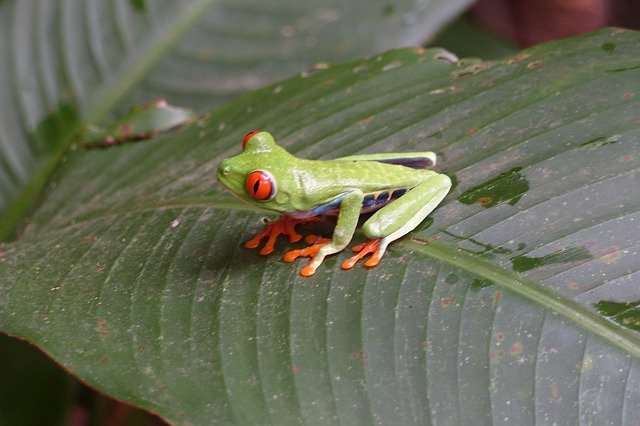Everyone wants the best for their pets, but it can be difficult to understand your little friend’s needs when they have no way of directly communicating with you- especially frogs.
The only solution left for us pet owners is to try and get familiar with their movement and body language so that we can try to assess their needs as best as we can.
If you’re wondering whether or not your red-eyed tree frog is hungry, watch his behavior. You might notice that they get a little extra active when you come into the room; this typically means that he/she associates you with feeding time, and is excited about the possibility of getting some fresh crickets.
That said, there is no real way to know for sure, so keep reading to find out what and how often you should be feeding your red-eyed tree frog!
How to Tell if My Red-Eyed Tree Frog is Hungry
Watch Your Red-Eyed Tree Frog’s Behavior
The sad truth of the matter is that frogs aren’t as expressive as, say, other types of mammal pets- at least not in ways that humans can easily understand. There isn’t a surefire way to know without a doubt that your red-eyed tree frog is hungry.
If you’re still wanting to know a method for how to tell if my red-eyed tree frog is hungry, anecdotally, sometimes frogs will become more active when you enter the room. This is because they are fed by you, and come to associate your presence with food through conditioning.
Therefore, if you notice your croaking friend gets excited when you’re around, it might be because he’s looking to get fed.
It’s important to note, however, that frogs are a type of animal that is prone to over-eating and can become obese. It’s important not to over-feed your red-eyed tree frog just because he seems hungry- you must follow the proper feeding procedures to ensure the health of your beloved pet.
Let’s dive into what the proper diet of a red-eyed tree frog is so that you can be confident that the amount you’re feeding him and what you’re feeding him is correct and supporting his health.
[su_box title=”Our Red-eyed Tree Frog Guide”]Want to know everything about your red-eyed tree frog? Are they healthy, overweight, or have other health problems? Then you should have a look at our Red-eyed tree frog guide. It is an absolute must for every owner of these wonderful creatures. Just Click Here to have a look.[/su_box]
What Should I Feed My Red-Eyed Tree Frog?
As adorable and innocent as red-eyed tree frogs look, they’re actually carnivores. Due to their small size, they feed mostly on insects like crickets, grasshoppers, flies, moths, and even frogs that are smaller than them.
Red-eyed tree frogs need a diet that consists of mostly live food- that means you’ll have to make regular trips to the pet store to buy some living crickets or grasshoppers to feed your frog.
If you’re primarily feeding your red-eyed tree frog only one type of bug, it’s important to add some variety every once in a while to ensure he’s getting diverse nutrients. You can get live mealworms or calciworms to supplement their diet- but only a few, as these are high in fat.
Not only that, but you’ll want to purchase supplement powder that contains calcium, vitamins, and minerals to dust the live insects before feeding them to your friend. This step is absolutely imperative, and you can find this kind of powder at most pet stores.
Your red-eyed tree frog also needs a source of freshwater for hydration, so make sure you have a fresh bowl of water available for him daily. You’ll also want to mist his enclosure every once in a while so it stays nice and humid inside, as this type of frog is used to tropical climates.
How Often Should I Feed My Red-Eyed Tree Frog?
As aforementioned, pet frogs are prone to overeating themselves into obesity. This can lead to disease or even death. Therefore, it’s especially important to make sure that your red-eyed tree frog is fed according to schedule.
- Growing juvenile red-eyed tree frogs should be fed every single day to support healthy growth.
- Subadult red-eyed tree frogs should be fed every two to three days.
- Adult red-eyed tree frogs should be fed only two to three times a week.
- That doesn’t sound like a lot, but these are very small creatures who get a lot of calories from the living insects they consume.
Make sure to feed your frog at night, as that is when they are the most active and most likely to eat. You can feed them three to five insects per serving; they don’t need more than that much at a time.
There you have it! If your red-eyed tree frog is especially excited to see you enter the room, it might signal hunger- but make sure you’re feeding him according to schedule and never too much to prevent overeating and obesity. Your little buddy requires a diverse diet of live insects and supplement powders administered during night hours to ensure his health. Good luck!




